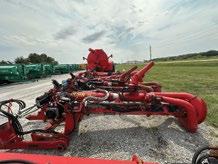













SEE YOU ON THE ROAD!
Our 2025 tradeshow schedule:
» Iowa Pork Congress | Jan. 22-23
» Iowa Ag Expo | Jan. 30-Feb. 1
» AAI Showcase & Conference | Feb. 11-12
» Missouri Pork Expo | Feb. 18
» World Pork Expo | June 4-5
We are no longer o ering on-phone or in-field technical support for all Norac UC4-based systems. UC4 parts are obsolete, including sensors. Topcon has announced that several components for UC5 will no longer be available a ter December 2024. We will continue to supply parts for UC5-based systems as we deplete in-house stock. Once that stock is gone, UC5-based system parts will be sold on an order-only basis, and all sales will be final.
Chat with your Stutsman agronomy salesperson to learn more! 4 12
Customers with UC4 and UC5-based systems are encouraged to upgrade their systems to Norac’s newer and more reliable UC7 system. UC7 upgrade kits are available for most sprayer models. Please call and ask a member of the field application equipment and precision ag team for more information.
If you’re looking to upgrade your Ag Leader steering package, from now until December 31, 2024, is the time! Get up to $5,000 o a complete steering package (including the new InCommand Go 16 display) with eligible trade-in. Reach out to our precision ag team to learn more.

Bigger screen + clearer view of mapping + added connectivity of a built-in cell modem Check it out for yourself!
Whata year it has been for us. From reflecting on our roots and those who made this significant anniversary possible, to celebrating new milestones, 2024 has been both humbling and reinvigorating. From one young man with a truck and a milk route, to the Stutsmans of today, our vision has been the same: to serve customers like you for success through new opportunities, whether that’s products, services or technology.
As the calendar turns to 2025, we may no longer be celebrating a monumental year, but that does not change the gratitude we have for you and for allowing us to be a part of your own journey. There’s simply no other way to put it — we’re here because of you. Thank you for putting your trust in us.
90 years is a long time, but we’re just getting started …
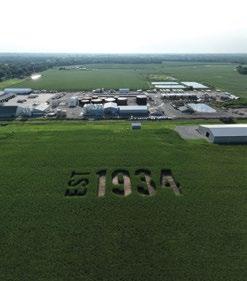

“The success of this company is due to not only its employees, past and present, but also from a set of principles, a philosophy, a way of doing business.”
- Eldon Stutsman



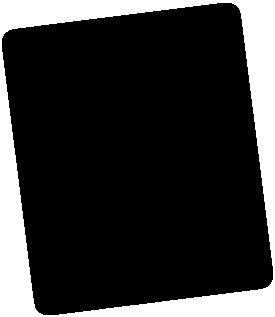









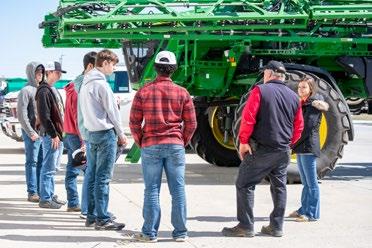



bra d w h y in m e ways than o !







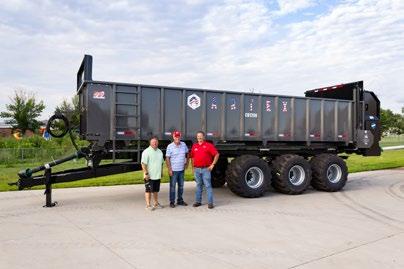
“Focus on service, and sales will come naturally.”
- Eldon Stutsman





t some u . Had some fun!
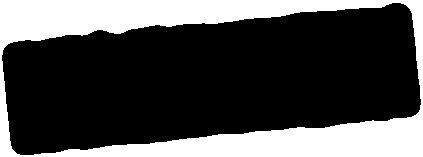





“If you aren’t making a few mistakes, you aren’t trying hard enough. Just don’t make the same mistakes twice.”
- Eldon Stutsman





BY: MOLLY HAUB | PREMIER CROP SYSTEMS, IOWA NITROGEN
COLLABORATOR

Every year, farmers have a delicate balance in trying to figure out how much nitrogen to apply to maximize their corn yield while also remaining economically viable. Making even small changes to a nitrogen program can seem scary at times. You may be asking yourself if there is an easier way to help you learn optimum rates on your fields and possibly even within the same field. I am happy to say there is an easy way to do this.
Stutsmans is a proud partner of the Iowa Nitrogen Initiative. What is the Iowa Nitrogen Initiative? It is a collaborative e ort between private and public entities designed to enhance nitrogen management in Iowa. The program’s vision is to leverage scientific research to benefit Iowa farmers through improved productivity, profitability and environmental performance. I am afraid what you may have just read is that the Iowa Nitrogen Initiative is designed to get you to reduce your nitrogen rate and that could not be further from the truth. The goal is to maximize your pounds of nitrogen needed to produce a bushel of corn. For some people, maybe there is the cost savings potential of being able to back down their nitrogen rates. For others, money could be being le t on the table by not applying enough and sacrificing yield. We are here to help you try to find the sweet spot that not only maximizes yield, but also gives you the best return on your investment.
How do we accomplish this task? Anyone who has access to a nitrogen application machine with a rate controller and has a yield monitor in their combine is able to execute a trial. A prescription will be created based on your current nitrogen practices, goals and comfort level. All you have to do is farm like normal. No flagging, weigh wagons or special practices are required. The Stutsman team will gather your as-applied data, along with a few more management questions to help populate the database.
I mentioned a database which may have you slightly worried, but I want to assure you that outside of the immediate project personnel, your data is completely anonymous going into the database. The long-term goal of the database is to replace the existing nitrogen calculator that Iowa State University has and create several new tools to assist farmers with nitrogen decisions. This will help compare your management practices to see how you compare against the data in the database, visualize how a di erent management decision could have a ected your operation, and predict the best agronomic and economic nitrogen rates for your operation.
In the 2024 crop year, we had over 450 on-farm trials and expect results to be shared in early 2025. However, the database will only get better through the help of more farmers. We want to have all kinds of data go into the database: manured fields, non-manured fields, di erent cropping rotations, your best ground, your worst ground and everything in between. The process to participate is as easy as contacting your Stutsman sales representative and letting them know. They will get the right people involved and help walk you through the process.
Your involvement in the Iowa Nitrogen Initiative will not only benefit your farming operation but also contribute to the collective knowledge supporting all Iowa farmers. Together, we can work toward more e cient, sustainable and defendable nitrogen management practices. Help us lead the way in nitrogen management.

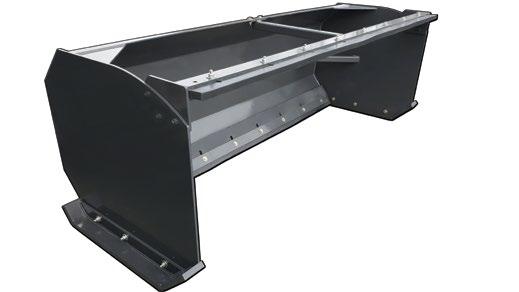



BY: GREG SHEPHERD, MS CCA | BECK’S FIELD AGRONOMIST

Several aspects of how Beck's brings soybean seed to the farmer set them apart in the industry.
First, Beck's packages their soybeans at 130,000 seeds per bag. Why? Within the soybean seed production industry, one factor that limits the genetic options for farmers is seed size. If a soybean variety consistently produces large beans to the point where 140,000 seeds may not fit in a bag, that variety is o ten not selected; even if that variety is the highest yielding, most agronomically sound soybean, most companies will pass on it just because its large seeds will not fit in their bags.
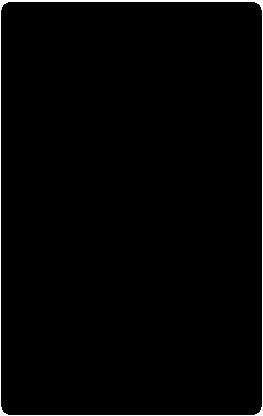


With this understanding, Beck's decided to go a uniquely di erent direction by packing all soybean units in 130,000 seeds per bag. It's important that we don't limit farmers' genetic choices due to the arbitrary number of seeds that will fit in a bag.
Next, every bag of Beck's soybeans comes treated with an industry-leading seed treatment. In over 14 years of multi-location testing, our Practical Farm Research (PFR) shows that Escalate®-treated soybeans return an average ROI of $45 per acre over untreated soybeans.
The photos to the le t of V2 growth stage soybean shows Escalate (right) versus a base fungicide and insecticide seed treatment (le t) and visually highlights the early growth and vigor enabled by our seed treatment. Escalate is applied to all seed at one of our Beck's facilities by full-time certified treater operators. That means we can uphold the highest standards of quality and consistency.
Escalate on corn also comes standard on every bag of Beck's seed corn. This top-of-the-line seed treatment package is included at no additional cost. With multiple modes of action, Escalate on corn protects against over 25 di erent diseases, insects and nematodes.
When deciding which elite ingredients will make up our proprietary seed treatment packages, we do the hard research to ensure farmers receive an exclusive blend to protect their crop at the highest level. Our seed treatment team continues to navigate the ever-changing landscape. They conduct seed treatment trials across the Midwest to help determine which ingredients should be included in our seed treatment packages. All this for a treatment package we o er to farmers at no additional cost.
Still, we recognize that each year and every field is di erent. The yield-robbing pests farmers face from farm to farm are di erent, so we recently began o ering a second package option for Escalate on soybeans, which is tailor-made for Iowa growers.
Escalate | Nemasect | SDS+ is our standard package that comes at no additional cost. It features 10 active ingredients, including three fungicides, one nematicide, two insecticides, two bio-stimulants and two bio-fungicides. Our standard treatment has activity on nematodes, SDS and White Mold, three of the biggest soybean yield-robbers.
Escalate | Nemasect | SDS+ with Saltro® is our upgraded package that provides 14 active ingredients, including four fungicides, three nematicides, two insecticides, three bio-stimulants and two bio-fungicides for an upcharge of $10.95 per unit. This extra cost o ers MEGA value and protection against nematodes, like SCN, that no other company in the industry can o er.
We're proud to back our industry-leading seed treatment with a high-yielding lineup of genetic choices in soybean varieties. Beck's product team selects soybean varieties from five di erent breeding programs, which is more genetic access than any company worldwide.
If one of our soybean breeders identifies a good variety, regardless of what camp the traits came from, we will add it to our lineup. We o er XtendFlex®, Enlist E3®, non-traited conventional and organic soybeans. We strive to provide farmers with what they want, not what is necessarily best for our bottom line.
Finally, we stand behind our seed like no one else in the industry. We firmly believe we are not selling you a bag of seed; we're selling a final stand — which is why we continue to o er 100% free replant on our corn, soybeans, wheat and elite alfalfa.
We believe that when it comes to your seed purchase decision, it's all about the total value package, not just a bag of seed. With the industry's largest, unbiased farmer-focused research program, Escalate seed treatment standard on every bag of seed, and our 100% Free Replant Policy, you can just expect more when planting Beck's. But it doesn't stop there. From elite reward and discount programs to industry-leading financing options and exceptional agronomic and sales support, Beck's truly is the best value for your dollar. If you haven't planted Beck's before, give us a try and find out for yourself.





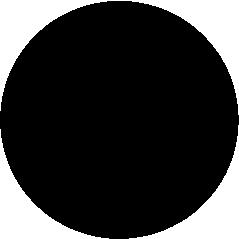





We added a new face to our agronomy team in September — Adam Millikin. As a ProVantage specialist, Adam will assist Tyson Miller with our precision agronomy program, ProVantage, including being heavily involved with data entry and compiling data for our end-of-season grower meetings.
Although new to our team, Adam has years of agronomy experience. Adam grew up in Center Point, Iowa, and spent many summers helping at his uncle’s cow/calf operation in Hedrick, Iowa. His passion for row crops began a ter high school when he started to work for a contract research farm in southeast Iowa.
Adam attended Iowa State University, earning his bachelor’s degree in agronomy. He has completed internships in ag retail and most recently, spent five years with Bayer Crop Science within their research and development division testing new corn hybrids and soybean varieties. Adam is also a Certified Crop Adviser (CCA) through the American Society of Agronomy. Adam, his wife, Jillian, and his daughter, Mallory, call Wellman, Iowa, home.
We look forward to Adam’s contributions to our agronomy team and growers. If you see him out and about or at one of our ProVantage meetings, be sure to say hello!
WHAT DO YOU ENJOY DOING IN YOUR SPARE TIME?
In my spare time, I enjoy spending time with my family on our hobby farm, traveling and cheering on the Iowa State Cyclones.
WHAT ARE YOU MOST EXCITED ABOUT IN YOUR NEW ROLE?
I am looking forward to serving our growers to help them maximize their profits.
WHICH STUTSMAN CORE VALUE MEANS THE MOST TO YOU?
Exceed expectations has been one of my core values my whole life. It was instilled in me at a young age to go the extra mile for people. I enjoy seeing the joy on other people’s faces when I exceed their expectations.



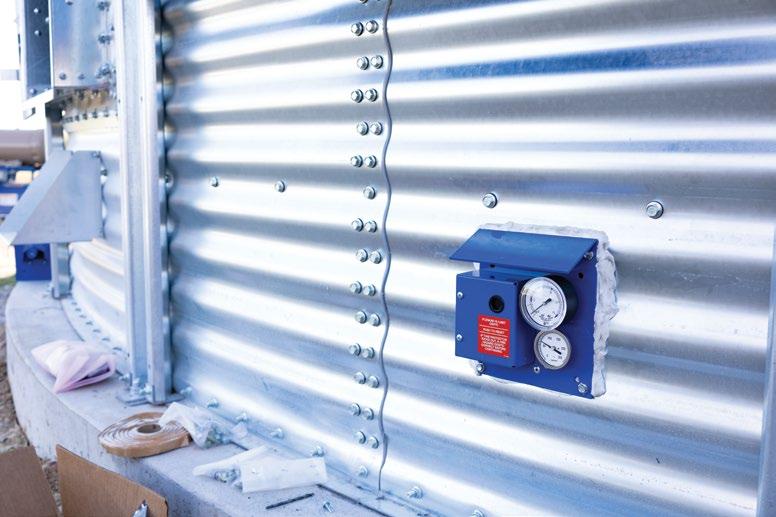


BY: DEREK BONTRAGER | PRECISION AND EQUIPMENT SALES
Salford’s Halo VRT is not a new product; it has o cially been available for nearly two years. The Halo VRT was introduced as the industry’s first variable-rate tillage tool on a high-speed disk frame. The variable-rate tillage concept is designed to be a tool for vertical till, seedbed prep and even leveling in the fall. The Halo VRT o ers hydraulic adjustable blades that can be adjusted in-cab and on the go to match the user’s desired tillage needs.


You might say, “This new tillage equipment is only designed for larger farming operations with high-horsepower tractors.” You would be wrong. Salford o ers the Halo VRT in widths from 15 to 40 feet. The Halo VRT requires 11 to 18 horsepower per foot of working width depending on conditions and tillage intensity. Generally, 15 horsepower per foot is recommended. This means an operation with a 250-horsepower tractor should be able to fully utilize the full range of tillage possible with the Halo VRT. The 15-foot Halo VRT weighs 12,300 pounds, and Salford recommends pulling it at operating speeds of 8 to 14 miles per hour. This is where the horsepower is needed. The Halo VRT seems to work ideally around 11 miles per hour. As a point of reference, the 40-foot Halo VRT weighs 34,100 pounds and would require a tractor with 600 horsepower.
Salford initially introduced the Halo VRT in 20-, 25-, 30-, 35- and 40-foot versions. The tool has been very well received, but producers with smaller tractors have asked for a version suited for them. Thus, it was decided to build the 15-foot model which was introduced at the Farm Progress Show in Boone, Iowa, this fall. There are three key reasons why the Halo VRT is unique.













22-inch blades are independently mounted on a rubber torsion suspension capable of 7½ inches of travel in rough conditions. Blades are mounted in two rows with 5-inch overall spacing.
The Halo VRT also comes with standard features like single-point depth control, hydraulic fore/a t leveling, hydraulic wing down pressure and active finishing roller down pressure control. These features make the Halo VRT very easy to set and operate. Other standard features like sealed bearing hubs and easy access grease points provide for low maintenance. The robust 6-inch by 6-inch tube steel main frame gives the unit plenty of weight for long-term durability in tough conditions.
The Halo VRT o ers a choice of either heavy-duty, ½-inch-thick steel 14-inch double-rolling baskets or a semi-pneumatic rubber roller for a finishing system. Down pressure on either of these roller options is controlled by a valve on the tongue of the unit.
Wheels under the mainframe are o ered in 550-, 600- or 800-sized tires depending on the model. Twenty-five foot and larger models o er wheels on the wings for improved flotation.

Operators can control the tillage intensity by hydraulically adjusting blades from 2 to 15 degrees using an optional in-cab joystick. A working depth of 1 to 5 inches will also be a factor in the tillage intensity.

Machines fold forward in either two or three sections — depending on the model — to a compact transport width of under 12 feet. The 15-foot model folds to under 10-feet wide.
Whether you are looking for a tool to replace multiple tools or a new tool in the basket, the Salford Halo VRT is designed to work in a wide range of conditions — from fall leveling to vertical tillage to seedbed prep. It was developed to work at high speeds while keeping a uniform depth — necessary to help planters and drills run smoother and encourage more uniform seed emergence. As typical of other Salford tillage tools, the Halo VRT is engineered to provide a great finish and uniform residue management.
For more information or to demo the Salford Halo VRT, contact our equipment team or scan the QR code on the right. We are happy to help you decide if the Halo VRT is the best tool for your operation.

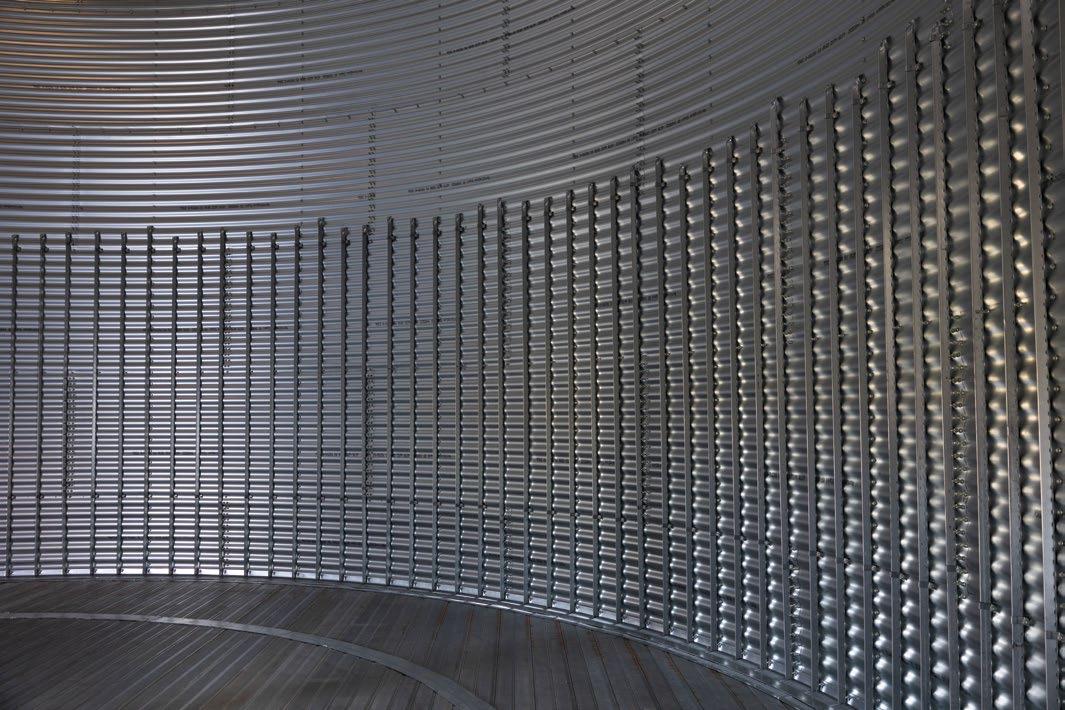




Whenit comes to drying systems, you have a few di erent options and with those options, a few decisions to make. The first step is determining whether an in-bin or portable drying system is a better fit. The best choice depends entirely on your operation and grain drying needs.
Both in-bin or portable drying systems come with pros and cons. Portable dryers, like GSI’s and Sukup’s, can handle a higher moisture input and maintenance can be performed no matter how much grain is in the bin. That being said, you will need a wet bin and transfer equipment to get the grain to and from the dryer.
On the flip side, the advantages of an in-bin system, like Shivvers’, are continuous flow, high levels of e ciency and not needing an additional wet bin. Shivvers units are also easier to retrofit with new technology and model updates than a portable system. However, you do have to be mindful of capacity limitations, and when maintenance or service is needed, the bin must be cleaned out.

A good rule of thumb is if you need to dry over 75,000 bushels, a portable dryer may be more economical and e cient.
If your operation is better suited for an in-bin system, Shivvers sets the standard with their continuous counter-flow drying systems. Continuous counter-flow drying is done by forcing heated air through a perforated drying floor. As the air moves upward, the layer of grain on the floor dries and the grain above is warmed. Then, using two or three tapered sweep augers (depending on the exact system you get), corn is moved toward the center vertical or discharge auger. Moisture sensors test the corn up to 120 times per minute. Once the grain has reached the desired moisture level, it is moved out of the drying bin into storage bins. If the sample doesn’t meet the desired level, the sample is spread back on top of the drying bin and the process continues until the desired level is reached.
Shivvers has two continuous counter-flow drying system options: Circu-Lator and Dri-Flo. While the systems share the same general drying concepts, they do vary in how the grain is transferred to storage bins. The Circu-Lator has a center vertical auger that transfers the grain, whereas, with the Dri-Flo, grain is moved through a conventional horizontal unload auger underneath the drying floor.



The Circu-Lator is an all-in-one drying system that allows you to do both continuous-flow and batch drying. It also does not require any additional transfer equipment. Although the Circu-Lator has the center vertical auger, it still has the horizontal unload auger under the bin floor for easier unloading.
» Circu-Lator Models
» Circu-Lator 2 Performance System
» 2 Tapered Sweep Augers
» Fits 18’ to 42’ Bins
» Up to 600 BPH Drying Capacity
» Up to 13,100 Bushels Surge Capacity
» Hi-Torque Circu-Lator 2 Performance System
» 2 Ultra-High-Capacity Sweep Augers
» Fits 33’, 36’, 42’ or 48’ Bins
» Up to 1,015 BPH Drying Capacity
» Up to 14,500 Bushels Surge Capacity
» Hi-Torque Circu-Lator 3 Performance System
» 3 Ultra-High-Capacity Sweep Augers
» Fits 36’, 42’ or 48’ Bins
» Up to 1,445 BPH Drying Capacity
» Up to 14,500 Bushels Surge Capacity

The Dri-Flo system is designed for operations needing higher removal capacities that already have grain transfer equipment like grain legs or an air system. With the Dri-Flo systems, tapered sweep augers pull layers of grain toward the center bonnet. Then, the grain is measured and removed through the conventional horizontal unload auger underneath the drying floor.
» Dri-Flo Models
» Dri-Flo 500 Performance System
» 2 Tapered Sweep Augers
» Fits 24’ to 42’ Bins
» Up to 500 BPH Drying Capacity
» Up to 13,100 Bushels Surge Capacity
» Dri-Flo 1000 Performance System
» 2 Ultra-High-Capacity Tapered Sweep Augers
» Fits 18’ to 48’ Bins
» Up to 1,000 BPH Drying Capacity
» Up to 14,500 Bushels Surge Capacity
» Dri-Flo 1500 Performance System
» 3 Ultra-High-Capacity Tapered Sweep Augers
» Fits 18’ to 48’ Bins
» Up to 1,445 BPH Drying Capacity
» Up to 14,500 Bushels Surge Capacity
» Dri-Flo 2500 Performance System
» 4 Ultra-High-Capacity Tapered Sweep Augers
» Fits 48’ Bins
» Up to 2,200 BPH Drying Capacity
» Up to 7,300 Bushels Surge Capacity



Like most any decision, there are pros and cons to both in-bin and portable drying systems. If an in-bin drying system makes sense for your operation, there are Shivvers continuous counter-flow drying systems that will work whether you have existing transfer equipment or not.

BY: JAKE DRAVES | PRECISION AG SALES AND SERVICE
Want to save time in the field but don’t want to buy new equipment? Two Ag Leader products come to mind for me — SureSpeed and RightSpot. SureSpeed helps you save time during planting while RightSpot gives you a boost in coverage during application season.
A ter a brief pause to navigate patents, SureSpeed is back! SureSpeed is Ag Leader’s a termarket solution to speeding the planting process up to 12 miles per hour while still being able to achieve a set population. While higher speeds could mean a drop in singulation or seed placement for other systems, SureSpeed handles it with ease.


SureSpeed fits on a wide variety of planter makes and models, including bulk fills and box hoppers. It has three di erent hopper options depending on your style of planter: 3-bushel boxes, 1.7-bushel boxes available in grey or yellow, and mini hoppers for bulk fill. Seed firmers that utilize the Keeton Quick Attach bracket will also work with SureSpeed. This product supports corn, soybeans, cotton, sugar beets, sunflower, sorghum and milo seeds. Each seed type has its own disk with a di erent number of cells except for soybeans which have two disks depending on row spacing.
Ag Leader made this product easy to use and easy to maintain. Performing maintenance when you’re prepping your planter before the season begins takes little time. The simplicity of this product also makes it extremely easy to service in the shop or the field with the brush wheel, belt, seed disk, ejector wheel and singulator being large enough that you won’t lose them while servicing. Changing crops has also never been easier, with no changes to the seed tube or any tools needed besides your hands. You simply swap out the disks and ejector wheel, saving you time from going back to the shop to grab tools and swap a whole meter out.
SureSpeed works best with a downforce system, but it is not needed to still run exceptionally well. The InCommand GO 16 and the InCommand 1200 are also the best displays to use with SureSpeed, giving you a window into your row units from the cab.

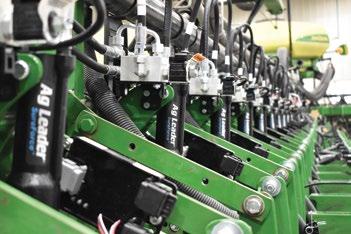

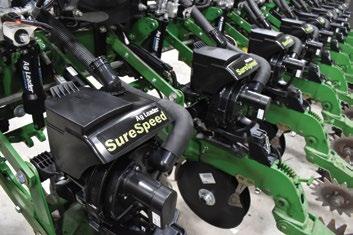



Another time-saving product is RightSpot, Ag Leader’s nozzle-by-nozzle control. Rightspot piggybacks directly o the Direct Command L2 system, the new propriety liquid control system allowing you up to 36 sections for swath control. This product works on an even wider amount of equipment and can control up to 144 nozzles! RightSpot is only compatible with the InCommand 1200 display or InCommand GO 16 display. However, it increases productivity, decreases overlap and gives you consistency like no other throughout a large range of speeds, no matter the terrain. With adjustable duty cycles on your fence row nozzles, you control how neat and clean your boundaries are.
RightSpot even compensates for front boom sprayers. On front boom sprayers, the rate can be adjusted using the rate shi t feature on said nozzles in front of the tires. Instead of doing that, you could also route extension cables from the Valve Control Modules to the valves on the rear tire fenders. RightSpot is also compatible with fertilizer drops with no additional fee to “unlock RightSpot” on the InCommand 1200 or InCommand GO 16. RightSpot is even capable of boom recirculation, called boom loop. With boom loop, you can get the product flowing before you even get to the field and keep the product from settling in the boom if stopping the machine.



If you want to get more speed and accuracy out of your equipment without paying new equipment prices, I recommend looking into a termarket upgrades like SureSpeed and RightSpot. When it comes to precision technology, they’re easily two of my favorites to level up your equipment and performance.

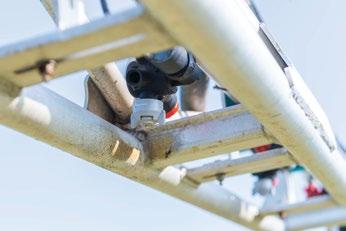











WHAT IS THE BEST ADVICE YOU HAVE EVER BEEN GIVEN?
“Never get outworked by your opponent.” – Reece Morgan
WHAT IS YOUR PROUDEST ACCOMPLISHMENT?
My wife and my kids.
IF YOU COULD SNAP YOUR FINGERS AND BECOME AN EXPERT AT SOMETHING, WHAT WOULD IT BE?
Golf. As much as I practice and play, I am not improving as much as I would like.
WHAT IS ON YOUR BUCKET LIST?
Travel to Ireland and Alaska.
WHICH STUTSMAN CORE VALUE MEANS THE MOST TO YOU?
Exceed Expectations. When I did business with Stutsmans as a wholesale customer in my previous role, I always felt Stutsmans exceeded expectations. I want to do the same now that I am a part of the Fairfax team.



In the ever-evolving world of agriculture, e ciency and precision are paramount. Dalton Ag’s anhydrous toolbars have been our go-to NH3 applicators for a while now. Recently, Dalton Ag introduced their new and improved Shadow series of NH3 toolbars. The Shadow line of toolbars stands out as a game-changer, o ering a range of benefits that cater to the modern applicators’ needs. Here’s a closer look at why the Shadow line of toolbars is making waves.

One of the standout features of the Shadow line of toolbars is its durability and precision. The newly redesigned row unit with urethane dampening springs ensures correct knife position and accurate placement of NH3. Along with single-point depth control, you can have confidence that you are applying at the correct depth. The new greaseless disc sealers close the trench to seal in the NH3 and require less maintenance.


Farm equipment needs to withstand tough conditions, and the Shadow line does just that. Built with 6-inch by 6-inch square tubing, it o ers exceptional durability and reliability. It also has a new maintenance-free undercarriage. You can trust that this toolbar will perform consistently, season a ter season, reducing downtime and maintenance costs.




The Shadow line of toolbar is incredibly versatile; it is suitable for a variety of farming applications with many custom row spacings. Whether you’re working with di erent soil types or tillage practices, the Shadow line of toolbars can be customized to meet your specific needs. This adaptability makes it a valuable addition to any operation.
A user-friendly design is another hallmark of Dalton Ag’s Shadow line. The toolbar is easy to set up and operate. Single-point depth control, hydraulic rear hitch with 1 ¼ swiveling ball and adjustable disc sealers allow you to focus more on work and less on equipment management. This ease of use translates to increased productivity, lower maintenance, fuel savings and reduced labor costs.
Investing in the Shadow line of toolbar is a cost-e ective decision in the long run. Its low maintenance, multiple configurations and proven durability mean lower operational costs and higher returns on investment.
With large frame sizes up to 60 feet and Raven Vortex HP cooler systems available, this is a great combination to cover more acres with limited personnel.
Dalton Ag’s Shadow line is more than just a piece of equipment; it’s a comprehensive solution designed to enhance productivity and sustainability. Its precision, durability, versatility, ease of use, cost-e ectiveness and labor-saving innovations make it an indispensable tool on your farm.






• Alfalfa • Forage Grasses & Legumes • Cover Crops • Natives and Wildlife


Inoculants


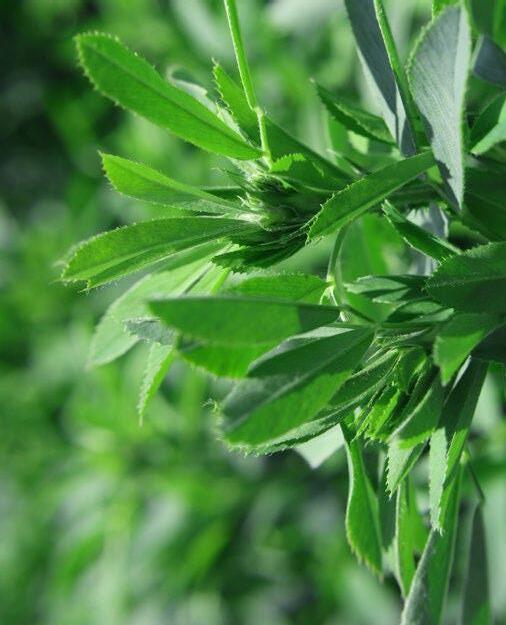

The little details can make a big di erence in ensuring we can apply products to your fields e ciently and accurately. That’s why we spend time perfecting the details we can control before the season begins.
Every year, the start of our fall season is marked by a day in September spent setting our dry-spreading equipment and applicators up for success (so we can deliver the most accurate application to you). We gather our dry spreaders from our Hills, Wellman and Fairfax locations all in one field accompanied by our agronomy operations team to ensure products are being applied with the utmost accuracy across our growers' fields since we apply a variety of dry products with di erent bulk densities.
First, our dry spreaders go through a catch test to verify rate output accuracy per the controller. Next, the machines are sent to a field set up with a test course made up of collection trays spaced horizontally across the course with a center collection tray added for four-wheeled spreaders.
Our applicators set their spreaders for the desired material density using the weights from the catch test. Three tests are conducted in the field: single product application, blended product application and blended product application including cover crops. A ter a spreader runs the course, the collection trays are carefully emptied into test tubes for evaluation.


Pan testing allows us to look at how the product is distributed across the spread pattern and the distance the various products are being thrown from the machine's center. If the pattern does not match the desired pattern, we can adjust several settings on the dry spreader. For the blended product tests, we also examine the contents within the test tubes to confirm there is consistency across the swath.
Beyond the annual dry spreader calibration, we added a John Deere Gator equipped with boundary mapping technology to our fleet. This allows us to outline field boundaries for customers receiving custom application services, increasing application speed and application accuracy.


With the boundary uploaded to our liquid application equipment from the John Deere Gator monitor, each spray nozzle will shut o automatically at waterways and field edges.
With service being our focus, we believe a lot of that comes with attention to the small details and in this case, it’s dialing in boundaries and our dry spreaders.






















